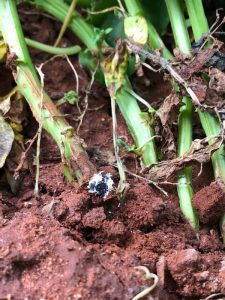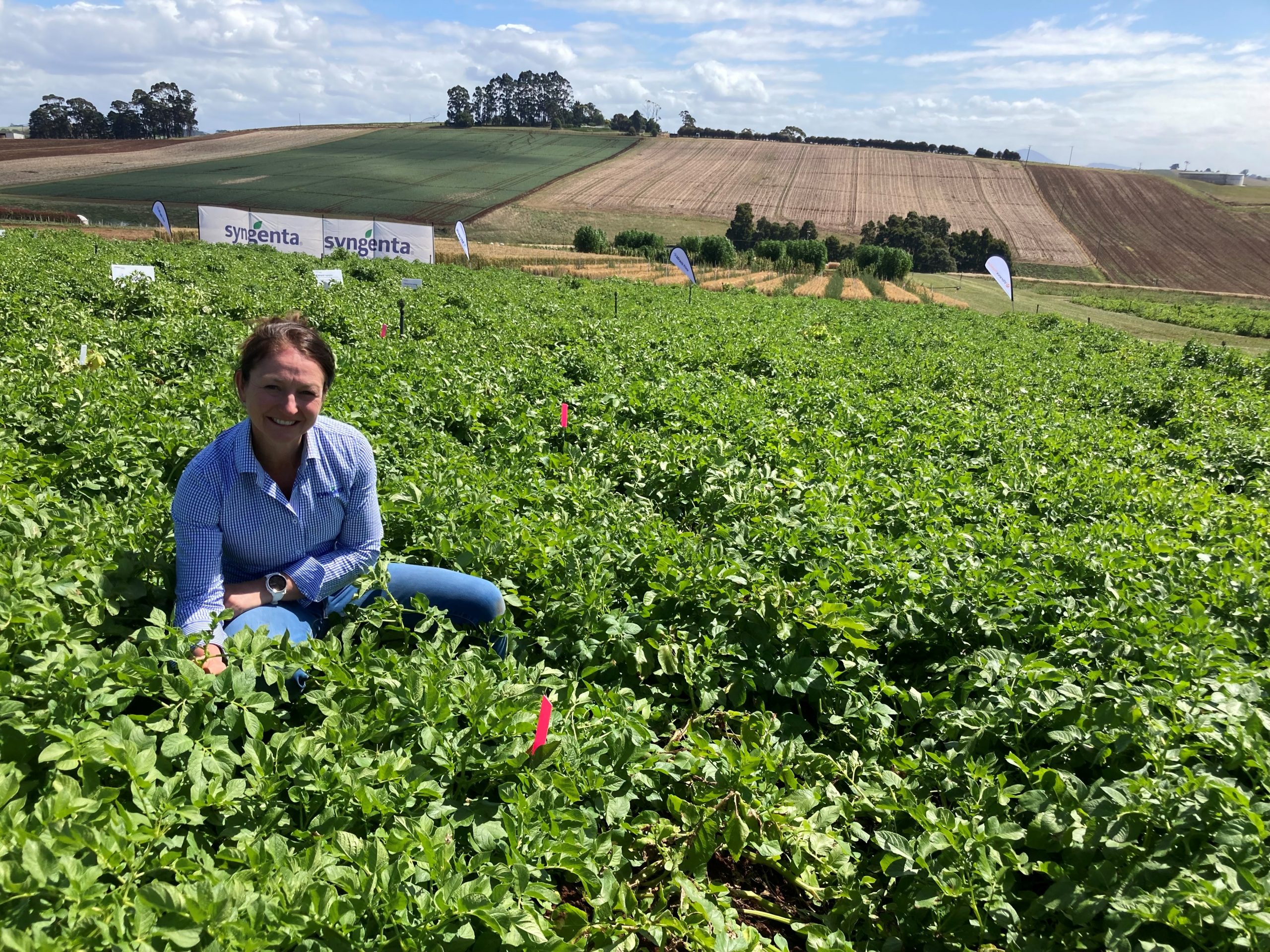Offering a new solution for sclerotinia control
In this ‘Ask the industry’ column, Syngenta Technical Services Lead Brandy Rawnsley (pictured above) discusses the causes and symptoms resulting from the soil-borne fungal disease, Sclerotinia, and the methods of protection that are now available to Australian potato growers.
Sclerotinia may be more problematic over the coming months for potato growers, with higher than average rainfall prolonging wet soil conditions during the growing season. Sclerotinia is a soil-borne fungal disease, so can be hard to control and often arises late in the season when stems contact infected soil.
Sclerotinia produces black sclerotia that can survive in soil for up to 10 years and infect new plantings. For this reason, the disease can be very difficult to control – especially under pivots with a history of disease.
The disease is more serious under milder temperatures (15-21°C) and prolonged wet weather conditions, particularly on susceptible varieties. Excessive irrigation or water-logged areas of the paddock are more susceptible to infection and dense crops favour infection due to poor air circulation.

Sclerotinia sclerotiorum have large black sclerotia (1-2 centimetres long) that can resemble rat dung at the base of the plant. Symptoms on stems include white fluffy mycelium and soft rot, which leads to stem and plant death. The fungus also has spores that can be spread by wind and in high humidity can even cause soft rot on higher leaves of the plant.
Growers now have a new solution for Sclerotinia sclerotiorum with the introduction of MIRAVIS® Prime fungicide.
MIRAVIS® Prime combines the powerful active ingredient pydiflumetofen (Group 7) with fludioxonil (Group 12), with both actives having powerful activity against sclerotinia. It also delivers optimum protection against target spot (Alternaria solani) and botrytis, so provides an effective choice for disease defence control in potatoes.
Providing protection
Pydiflumetofen works internally, moving very quickly into the waxy cuticle of the leaf and giving long-lasting protection. Fludioxonil is a contact fungicide and protects the surface of the leaf. Having these two modes of action means MIRAVIS® Prime can attack fungi at multiple sites with the added benefit of resistance management.
A preventative fungicide program – together with cultural practices such as crop rotation and irrigation frequency – will provide the best protection against sclerotinia.
Up to two applications of MIRAVIS® Prime can be applied per season. Foliar sprays early in the season inhibit the fungi entering the plant from the soil, while a later season application (post-flowering) stops the disease before symptoms appear.
Recent use of the product in the Griffith region of New South Wales showed outstanding control of sclerotinia, even in high disease pressure situations. Target spot was also controlled, giving potato growers confidence of achieving full yield potential.
About Syngenta
Syngenta is a leading agriculture company helping to improve global food security by enabling millions of farmers to make better use of available resources. Through world-class science and innovative crop solutions, our 28,000 people in over 90 countries are working to transform how crops are grown.
We are committed to rescuing land from degradation, enhancing biodiversity and revitalising rural communities. To learn more, please visit syngenta.com.au and goodgrowthplan.com. Follow us on Twitter: @SyngentaANZ.
Find out more
For more information or to ask a question, please contact your local Syngenta Territory Manager, the Syngenta Advice Line on 1800 067 108, visit the Syngenta Australia website or email Vegetables Australia: communications@ausveg.com.au. Please note that your questions may be published.
The R&D content for this article has been provided to Vegetables Australia to educate Australian vegetable growers about the most relevant and practical information on crop protection technologies and their on-farm applications.

